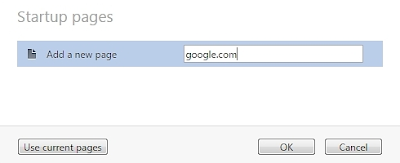Exp.CVE-2018-4901 Uninstallation: Know How To Get Rid Of Exp.CVE-2018-4901 In Simple Clicks
Exp.CVE-2018-4901 related similar infections
| Adware | EasyOn, Themobideal Adware, SVAPlayer, MediaTickets, Adware.WinAdClient, Golden Palace Casino, WebSavings, Adware.SavingsMagnet, Lanzardll.exe, WebRebates.v, Coupon Slider |
| Browser Hijacker | Admirabledavinciserver.com, Scorecardresearch.com, Midllesearch.net, Asafetyprocedure.com, Searchqu.Toolbar, 9newstoday.com, Openadserving.com, Suspiciouswebsiteblock.com, systemwarning.com, cpv.servefeed.info, Surveyscout.com, CoolWebSearch.mssearch |
| Ransomware | Cryptorium Ransomware, .odin File Extension Ransomware, CoinVault, Ceri133@india.com Ransomware, Calipso.god@aol.com Ransomware, Vanguard Ransomware, .7zipper File Extension Ransomware, Shark Ransomware, Cuzimvirus Ransomware, Sage 2.0 Ransomware, .ecc File Extension Ransomware, JuicyLemon Ransomware, XRat Ransomware, USA Cyber Crime Investigations Ransomware |
| Trojan | Trojan.PSW.Coced, Push Trojan, Trojan.Bootlock, Red Raider Virus, I-Worm.Ghostdog.vbs, RickDogg Trojan, Bamital.P, Trojan:JS/Seedabutor.C, Sus.Dropper.A, Trojan.Win32.Cosmu.adpt, Trojan.Bladabindi.F |
| Spyware | SystemGuard, DssAgent/Brodcast, PTech, Adware.ActivShop, Savehomesite.com, WinXProtector, Worm.Ahkarun.A |
Get Better Technical Analysis Of Exp.CVE-2018-4901
Exp.CVE-2018-4901 is another computer virus that makes your Windows System Tips For sick. Its being a persistently nasty virus that keeps you from away from functioning normally and often requires something powerful to Delete it. This harmful virus Exp.CVE-2018-4901 is design relentlessly to infect your Windows System files, alter the way your computer operates or stop it from working altogether. Its estimated that the Exp.CVE-2018-4901 infect more than thousand millions of computer users, that now operate over the Internet.
Exp.CVE-2018-4901 find its way with sharing of free music file, online games, picture files with users. It also get distributed with different rogue software that get installed automatically into the Windows System, opening junk email attachments, installing mainstream software without reading its entire terms and license agreements. Exp.CVE-2018-4901 is mainly programmed to harm your Windows System by Removing or modifying your Windows System files, reformatting your hard drive and so on. Others viruses simply replicates themselves or flooded a network with traffic, makes impossible to perform any online activity. Therefore, its wise to Delete Exp.CVE-2018-4901 as quickly as possible from your Windows System.
Quick Steps To Delete Exp.CVE-2018-4901 Tips For From Windows Windows System Control Panel
Windows XP :-
At first click on the Start button -> Open Control Panel -> Go to Add or Delete Programs -> Locate Exp.CVE-2018-4901 and tap Delete Exp.CVE-2018-4901.
Windows Vista :-
Tap Start button -> Open Control Panel -> Go To Delete Program -> Delete a Program Lies in Programs -> Find click on Delete Exp.CVE-2018-4901.
Windows 8/ 8.1
Right Click -> Menu icon in the Left bottom corner -> Select Control Panel -> Select the Delete Program statement -> Delete Exp.CVE-2018-4901.
Windows 10 :-
At first click on Win + X -> Windows Power Menu -> Click On Control Panel -> Tap Delete a Program -> Delete Exp.CVE-2018-4901.
Delete Harmful Exp.CVE-2018-4901 Extensions From All Browsers
Mozilla Firefox :-
At first go to Mozilla Firefox and select Add-ons or press Ctrl + Shift + A together.
The list of all installed extensions as well as add-on gets opened on your screen.
Now, you have to select and Delete Exp.CVE-2018-4901 extensions.
Reset Mozilla Firefox :-
At first go to upper right corner of Firefox browser and tap Menu button and press Help.
Select the Troubleshooting Information option from Firefox Help Menu.
On that Troubleshooting Information, just click on Refresh Firefox option.
A dialogue box will appear before your screen and click Refresh Firefox button.
Open Google Chrome Click on its wrench icon -> Click Tools -> Extensions.
In that Extensions tab, select Exp.CVE-2018-4901 extensions and click on Trash icon.
Click on Delete button from confirmation dialogue box.
Reset Google Chrome :-
At first click on the Three stripes in Google Chrome Browser, select Settings option.
You will find show Advanced Settings option, in bottom of page, Then click on it.
Now, tap Reset Browser Settings options.
Again you have to click on Reset Option to Delete Exp.CVE-2018-4901 Tips For .
First of all open Add-on Manager option, by going through Manage Add-ons, followed by Tools button.
Now, you have to find out Toolbars and extensions option in IE browser.
Here, just locate suspicious Exp.CVE-2018-4901 add-ons and extensions. Finally click on Disable option to Delete this threat permanently from IE browser.
Reset Internet Explorer :-
First of all click on the tools -> Internet Options.
Now, Internet Options dialogue box appears, tap Advanced tab -> Reset button.
In Reset Internet Settings, check Delete Personal Settings check-box, and tap Reset button.
Once you have followed this step, you just need to close and restart your Internet Explorer Browser.
Opera :-
At first click on the Customize and Control Opera button, located in the left hand part of Window. Select Extensions from drop down menu.
Select all harmful extensions from that list as Exp.CVE-2018-4901, and tap Disable.
After that, you have to click the Customize and Control Opera icon and again and then select Settings.
Go to the On start-up present under Settings option.
Select options for Open a Specific page or Set of Pages option , and tap Set pages link.
Find all unwanted entries related to Exp.CVE-2018-4901 from Startup pages, click X button, and Enter preferred start page -> Ok.
Then after proceed with Search section under the Settings -> Choose Preferred Search Engine from list.
Finally Restart your Opera browser and check for any other issues.
Basic Guide To Delete Exp.CVE-2018-4901 From Task Manager
First of all press Alt + Ctrl + Del button to open your Windows task Manager.
Open Process Tab, once Windows Task Manger opens before your screen.
Select Malicious Exp.CVE-2018-4901 processes, and click on End Process button.
Clean Malicious Exp.CVE-2018-4901 Entries From Registry Editor
At first go to Start menu, and select run command by pressing Win + R keys from keyboard.
Here, type regedit → Ok , and open Windows Registry Editor.
Search for Exp.CVE-2018-4901 and Delete all corrupted entries related with Exp.CVE-2018-4901.






































No comments:
Post a Comment